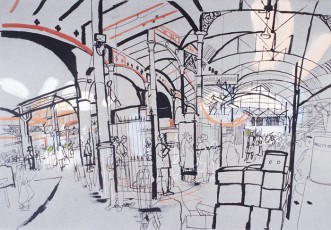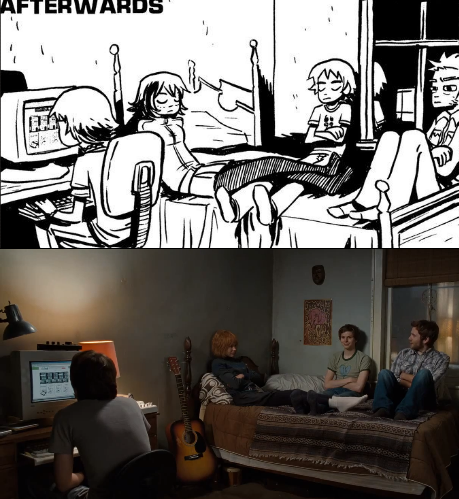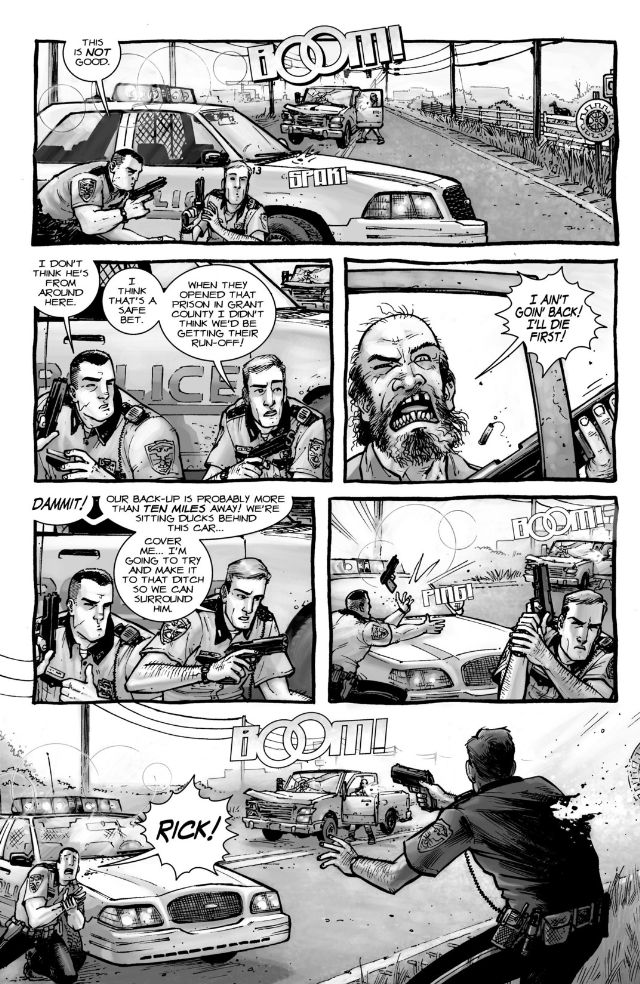Semiotics: Communication by means of signs.
C.S Pierce said “Signs take the form of words, images, sounds, odours, flavours, acts or objects, but such things have no intrinsic meaning and become signs only when we invest them with meaning.” (Chandler, 1994-2016) Ultimately, society and cultural norms are what define the meaning of signs. This means that they don’t necessarily reflect the truth but rather a stereotype or archetype defined by mankind (or ‘Myth’). Understanding signs is dependent on a shared meaning and understanding.
Roland Barthes developed semiotics and the concept of the sign further in order to use it as a tool for analysis of the way in which cultural values are communicated, produced and circulated. He studied how human beings use language, clothes, gestures, hair styles, and colour to convey to one another their tastes, emotions, ideal self image and the values of their society. This ideology is useful for people to express themselves and identify their social groups, class, culture/subculture and even gender identity. But it can also be problematic in that through signs, assumptions are made based upon cultural norms and gender stereotypes, we can’t always take a sign as a denotation, sometimes it only has cultural connotations (and therefore can be described as a ‘myth’ as it’s meaning is based upon ideology rather than fact). Barthes (1957) writes in ‘Mythologies’ that ‘language needs special conditions in order to become myth:Every image or sign upholds and therefore produces the normative values they express.’ put simply, myths are based upon cultural and societal norms. For example: ‘Red means passion’ is a myth because it is based upon one culture or group’s perception of the meaning of the colour red based upon nurture rather than nature. Other cultures view the colour red as a sign of danger or prosperity or wealth depending upon how they are taught to view it by society.
In order to discuss ‘gender’ it is important to know how it differs from ‘sex’ and to understand the ideas of a gender spectrum and gender binary. Firstly ‘gender is not inherently nor solely connected to one’s physical anatomy.’ (Gender Spectrum, 2015) Sex is described as including ‘physical attributes such as external genitalia, sex chromosomes, gonads, sex hormones, and internal reproductive structures. At birth, it is used to assign sex, that is, to identify individuals as male or female.’ (Gender Spectrum, 2015) Our Sex is usually determined before we are born and can in certain cases be misinterpreted. On the other hand, Gender is more complicated and more difficult to determine from outward appearances or ‘signs’ Gender is a ‘complex interrelationship between an individual’s sex (gender biology), one’s internal sense of self as male, female, both or neither (gender identity) as well as one’s outward presentations and behaviours (gender expression) related to that perception, including their gender role. Together, the intersection of these three dimensions produces one’s authentic sense of gender, both in how people experience their own gender as well as how others perceive it.’ (Gender Spectrum, 2015) Within western culture there is an idea that gender is binary and by looking at the outward appearance of a person it can be determined wether a person is male or female. Many in the western world feel that one can either be male or female and this is assigned by doctors at birth and cannot be changed. In reality, gender presents itself as a spectrum and there are not two set boxes to place people in (i.e male/female) . Whilst many people in western culture are cisgendered (their gender identity matches the gender they were assigned at birth and their biological sex) there are a variety of genders that individuals define themselves as being. For example: Transgender individuals’ gender identity is different to the gender they were assigned at birth and they often identify as the ‘opposite’ gender. They often change their outward appearance using signs of their gender identity to signify their gender identity (i.e long hair if they identify as female, short hair if they identify as male.) there are also individuals who have no gender at all (known as gender neutral) and others who identify as gender fluid (both/a range of genders) As a spectrum there are many genders which can overlap or be entirely separate from each other. individuals, regardless of gender identity will often use signs and signifiers of gender within their outward appearance to show society how to approach them or to express their identity in a way many in our western society can understand.
“the two sex, two gender distinction is a socially created one, not natural.” (Jhally, 2009) We use various visual signs and signals to determine people’s genders upon first encounters. Just a few of these are: Hair length, colour/ style of clothing, build, gait and height. An example of this is the ‘pink for a girl, blue for a boy’ argument.’Like other social constructs, gender is closely monitored and reinforced by society. Practically everything in society is assigned a gender—toys, colors, clothes and behaviors are just some of the more obvious examples.’ (gender spectrum, 2015) for example: In the late 20th and early 21st century baby boys were always dressed in blue (a ‘masculine’ colour) and baby girls dressed in pink (a ‘feminine’ colour) This would help people to assume the sex of the child when they are too young for it to be obvious. But this distinction has been known to be taken into later life. Especially before the 2010s, a man would be assumed to be feminine or homosexual if he wore pink (and therefore assumed to be weaker as femininity is seen as a weakness) as pink was a ‘girl’s colour’ therefore having connotations with not being masculine or not being a man altogether. However, this has not always been the case (proving that signs and signals are learned).”Ladies’ Home Journal article in June 1918 said, “The generally accepted rule is pink for the boys, and blue for the girls. The reason is that pink, being a more decided and stronger color, is more suitable for the boy, while blue, which is more delicate and dainty, is prettier for the girl.” (Haartman, 2011) Although the connotations are switched from what we associate them with today, they are still the same in a sense: Women and girls must use signs and signals to present themselves as delicate and dainty whilst men and boys are expected to use them to present themselves as strong and capable so as to be ‘normal’ and people conform to these visual codes of gender because we are taught from a young age that is wrong to stray from the norm.The blue/pink discussion a prime example of how the semiotic codes of gender can change and evolve ‘One need only examine trends related to men wearing earrings or women sporting tattoos to quickly see the malleability of social expectations about gender.’ (gender spectrum, 215)
We use visual codes of gender in order to decide how we should approach and interact with them. an example of this is the way in which people walk.”Our ability to recognise someone as either male or female is absolutely fundamental to our ability to interact with them and [that] there is nothing natural about that recognition. It’s dependent on certain signals being communicated that allow us to position people in categories (male/female) that make sense to us.” (Jhally, 2009) A woman’s gait is expected to be elegant, perhaps even slightly nervous, narrow and unconfident whereas a man’s is expected to be strong, confident and wide. When we look at men who have a more ‘stereotypically feminine’ gait often there is an assumption that they are homosexual as society sees the man as emasculated and feminine and therefore assumes that this equates to homosexuality as we are taught through popular culture and homosexual stereotypes that these are the signs of a gay man (for example, programmes like ‘little Britain’ where homosexual characters are caricatured and given heightened feminine features) . It becomes problematic to make assumptions about gender and sexuality based upon these signs as, ultimately gender is a spectrum and is unique to the individual: everybody expresses themselves differently. It is now 2016 and people are beginning to understand the fluidity and spectrum of gender much more. We can’t simply rely on signs to help us to make assumptions upon someone’s gender or sexuality as how they identify should not be defined by a normative society.
In advertising “Female hands have a different relationship to reality than male ones. Female hands are shown not as assertive or controlling of their environment but as letting the environment control them. So, for example, when women are shown holding something it often looks as though it is just resting there, not being held in a strong manner.”(Jhally, 2009) This speaks volumes about the visual codes of gender being imposed upon us. The woman’s touch in advertising is superficial and weak therefore the word ‘woman’ has connotations with fragility, women are expected to be delicate and fragile and a delicate and fragile person will be categorised as feminine or female regardless of their gender identity. “In contrast, the masculine touch is powerful and assertive, presenting a different relationship to the world. instead of tentative, the male touch is utilitarian, controlling and bold.” (Jhally, 2009) Men are shown as strong, bold, powerful. A man’s touch is manipulative and powerful in advertisement. Therefore the normative values we hold on men are that they should be muscular, confident and able to easily manipulate an environment or situation. If someone can’t fit in to this category due to the signs they are showing then they will be immediately categorised as feminine or female (especially as many people believe in a gender binary). If a woman is seen as strong or as having a utilitarian, bold touch she is immediately categorised as ‘butch’ and therefore society sees her as homosexual (because, again, popular culture says that ‘unfeminine’ women cannot be heterosexual and therefore we use signals of strength to pigeon hole them into the category that we have been taught to put them in regardless of their true sexuality).
There are many men and women who are cisgendered and choose to dress as the ‘opposite’ gender as an art form, for work or even as a form of activism. They often use visual codes of gender and the connotations attached to these to their advantage in order to create a female or male illusion so as to play upon what it means to be a stereotypical male or female. Often this is to prove the point that people don’t have to be put in a box and ‘you don’t have to fit a certain mould to make it in any industry’ (Sharon Needles, 2012) Examples of this are drag queens, androgynous people and gender capitalists. Drag queens, for example, use visual codes of femininity such as heavy makeup, long hair, dresses and high heels in order to make themselves look like a stereotypical woman. They create the illusion of femininity often by using padding, waist trainers/ corsets and contouring to look like a socially defined beautiful woman (as women are expected to be thin, have hourglass figures and defined cheekbones.) This is in order to question our ideas of what is ‘feminine’ or ‘masculine’ and what is or can be beautiful,’Drag, and especially the drag for which RuPaul and her “girls” have become known, is intended to serve up our preconceptions about gender (and sometimes race), beauty, attraction’ (carpentier, 2016) It is not only drag queens who aim to change our perception of gender and beauty by using visual codes of gender to create an illusion. There are androgynous models who identify as gender capitalists. ‘a gender capitalist is someone who takes advantage of opportunities given to people based on their perceived sex or gender.’ (Bustle, 2015) Rain Dove, a gender capitalist who identified as a gay woman, uses her ‘masculine’ face (defined by society due to her defined cheekbones, short hair and muscular face) and her ‘feminine’ body to enable her to model for both mens and womenswear and to highlight issues with inequality. She uses the visual codes of gender for women and men in order to switch between her female self and her androgynous self.People pay attention to her because she is different and embracing her body whilst still looking ‘feminine’ or ‘masculine’ meaning that she is able to reach a large audience and therefore promote gender equality and body positivity. On the other hand she is conforming to gender stereotypes using visual codes of gender to look stereotypically male (wearing suits) or female (wearing sexy lingerie ) which could be seen as problematic. Dove explains ‘I’m doing this because of the visibility I get to talk about a better future’ (Bustle, 2015)
Ultimately there are visual codes of gender that we are expected to display in order to conform and express our society’s normative values however, in modern day this is outdated and it can be problematic to assume somebody’s gender or sexual identity based on their outward appearance. We have all been taught from a young age to not judge a book by it’s cover yet almost every day we are making assumptions based on visual codes of gender, signs and signals in order to pigeon-hole people. Gender and its visual codes can however be taken advantage of in order to promote body positivity, destroy normative ideas about gender, beauty, race and attraction through ‘gender bending’, drag and androgyny.
Bibliography
Barthel, D. (1988) ‘putting on appearances: gender and advertising’ Philadelphia: Temple University Press.
Barthes, R. (1957) ‘Mythologies: Roland Barthes’ New York: Hill and Wang
Berrick, G. (2015)WATCH: Model Rain Dove is Genderqueer ‘Gender Capitalist’ and Fashion Brand [online] available at: Pride.com/fashion/2015/09/17/watch-model-rain-dove-genderqueer-gender-capitalist-and-fashion-brand [accessed on: 30th May 2016]
Bustle (2015)Rain Dove: New York’s Androgynous Supermodel [online] Available at: youtube.com//watch?v=7fMSNpemTE0 [accessed on: 30th May 2016]
Carpentier, M. (2016) ‘RuPaul’s Drag Race: empathy and naked emotion are the point, not winning’ [online] Available at : theguardian.com/tv-and-radio/2016/may/17/rupauls-drag-race-political-correctness-identity-gender [accessed on: 30th May 2016]
Chandler, D (2016) ‘Semiotics for beginners’ Available at http://www.visual-memory.co.uk/daniel/Documents/S4B/sem02.html [Accessed on: 8th February 2016]
Craig, S. (1992) ‘Men, Masculinity and the Media’ California: Sage Publications
Gender Spectrum (2015) Understanding Gender [online] Available at: Genderspectrum.org/quick-links/understanding-gender/ [accessed on: 30th may 2016]
Glover, D. Kaplan, c. (2009) ‘Genders’ New York: Routledge
Haartman, M. (2011) ‘The history of Pink for girls blue for boys.’ Available at: Jezebel.com/5790638/the-history-of-pink-for-girls-blue-for-boys. [Accessed on: 8th February 2016]
Hill, C. (2004) ‘Defining Visual Rhetorics’ New York: Lawrence Erlbaum Associates, inc.
Jhally, S. (2009) The codes of Gender . Available at: topdocumentaryfilms.com/codes-gender [accessed on: 8th February 2016]
Jeffreys, S. (2005) ‘Beauty and Misogyny’ New York: Routledge
Stern, C. (2015)‘My body is just as good as any Victoria’s Secret girl but they’ll never use me because I have a masculine face’: Androgynous model challenges beauty standards’ available at: dailymail.co.uk/femail/article-3351162/Androgynous-model-challenges-Victoria-s-Secret-s-beauty-standards-posing-brand-s-lingerie-editing-faces-Angels-like-Candice-Swanepoel-Elsa-Hosk-body.html [online] [Accessed on: 30th May 2016]
Weitz, R. Kwan, S. (2014) ‘The Politics of Womens Bodies’ New York: Oxford University Press


